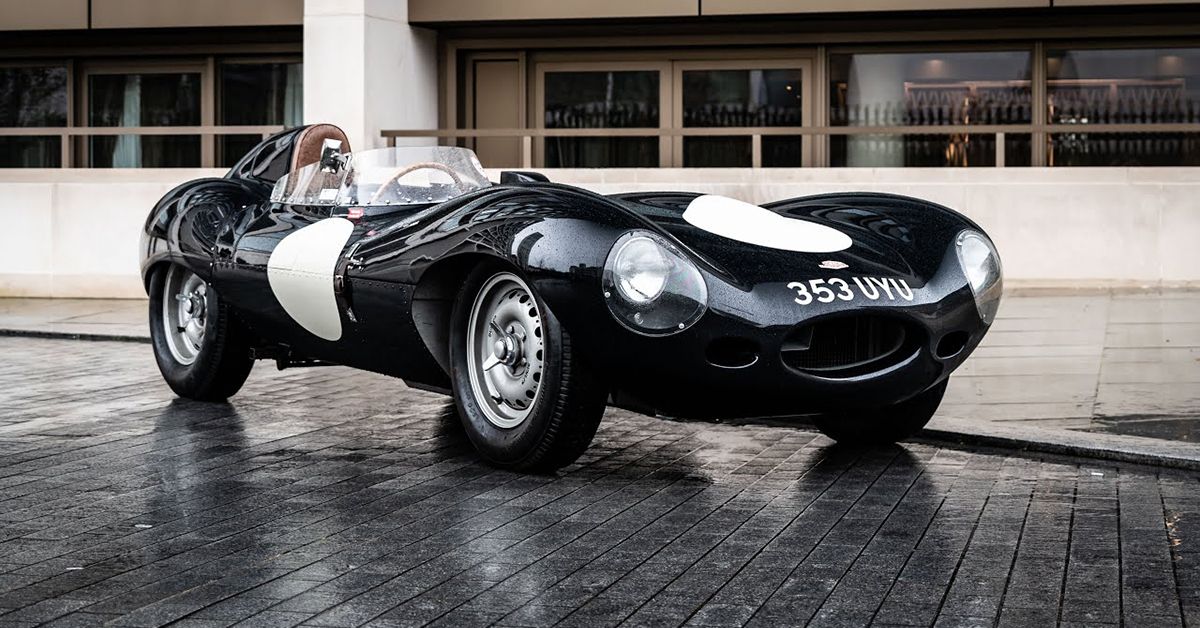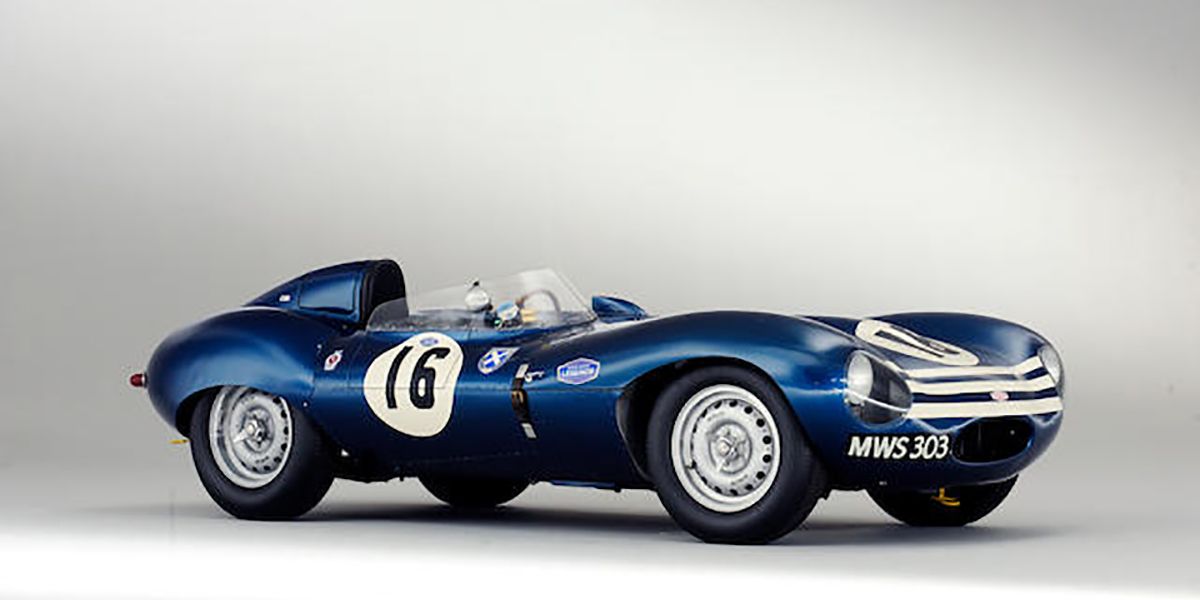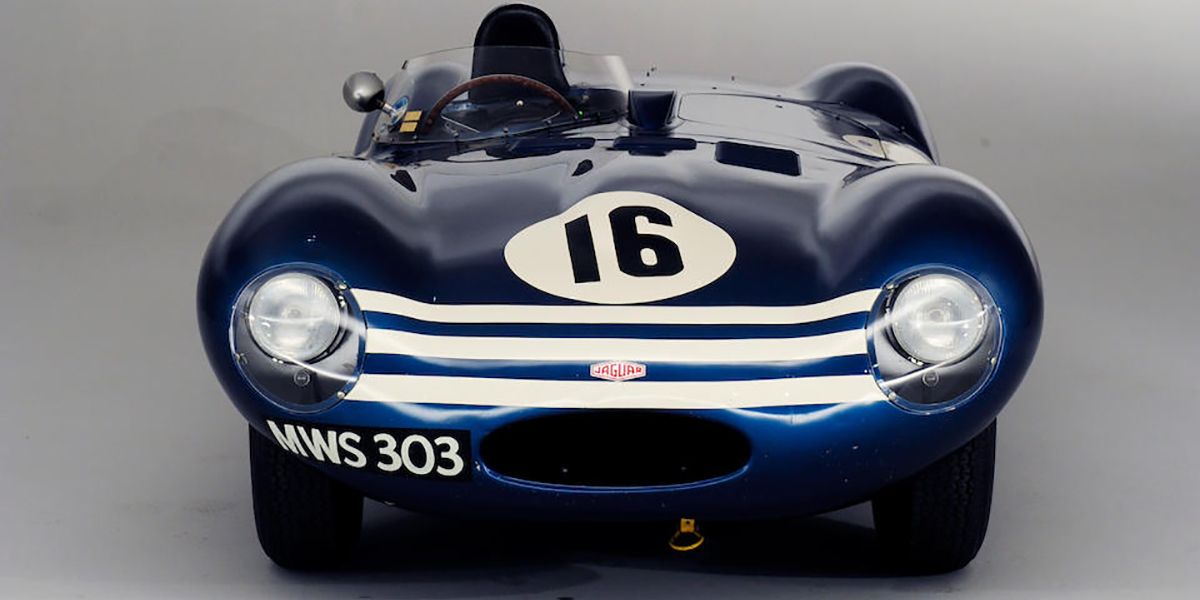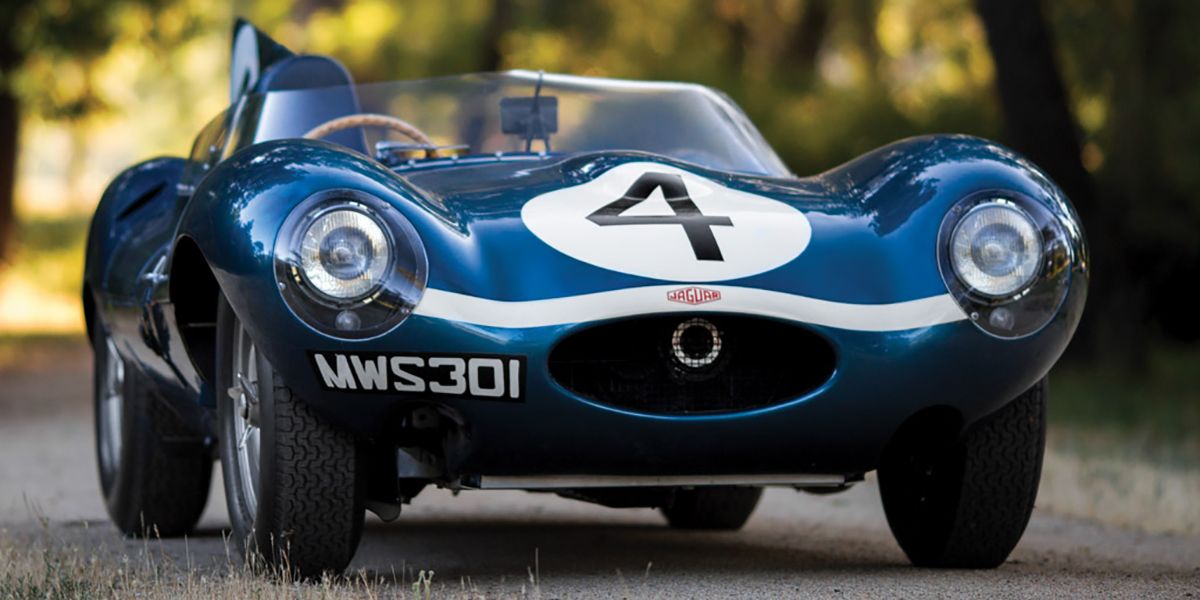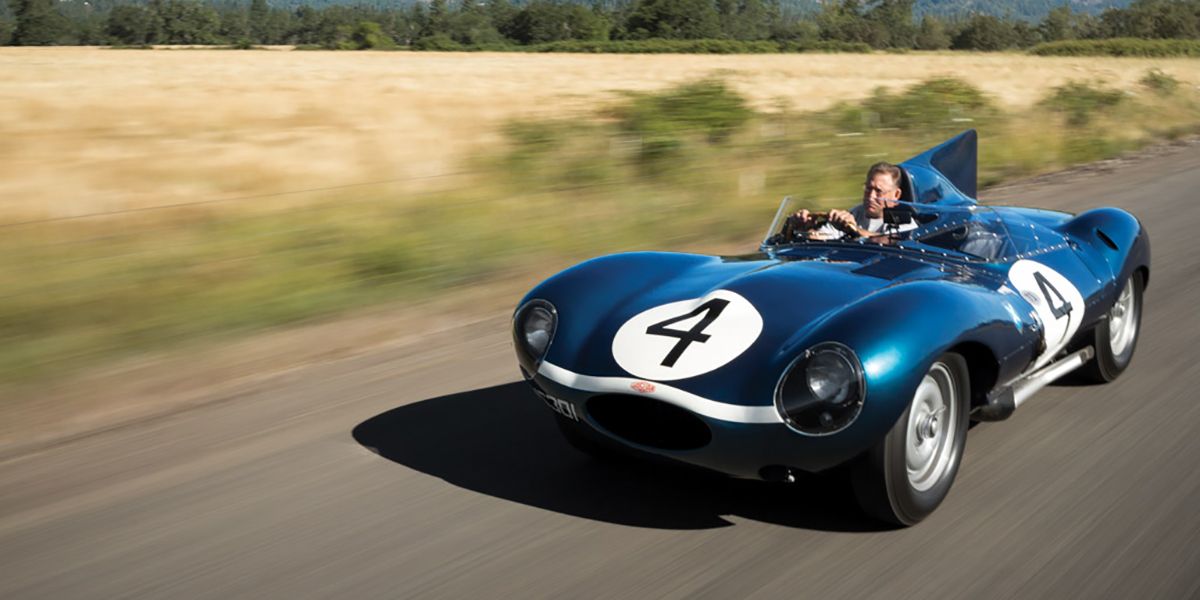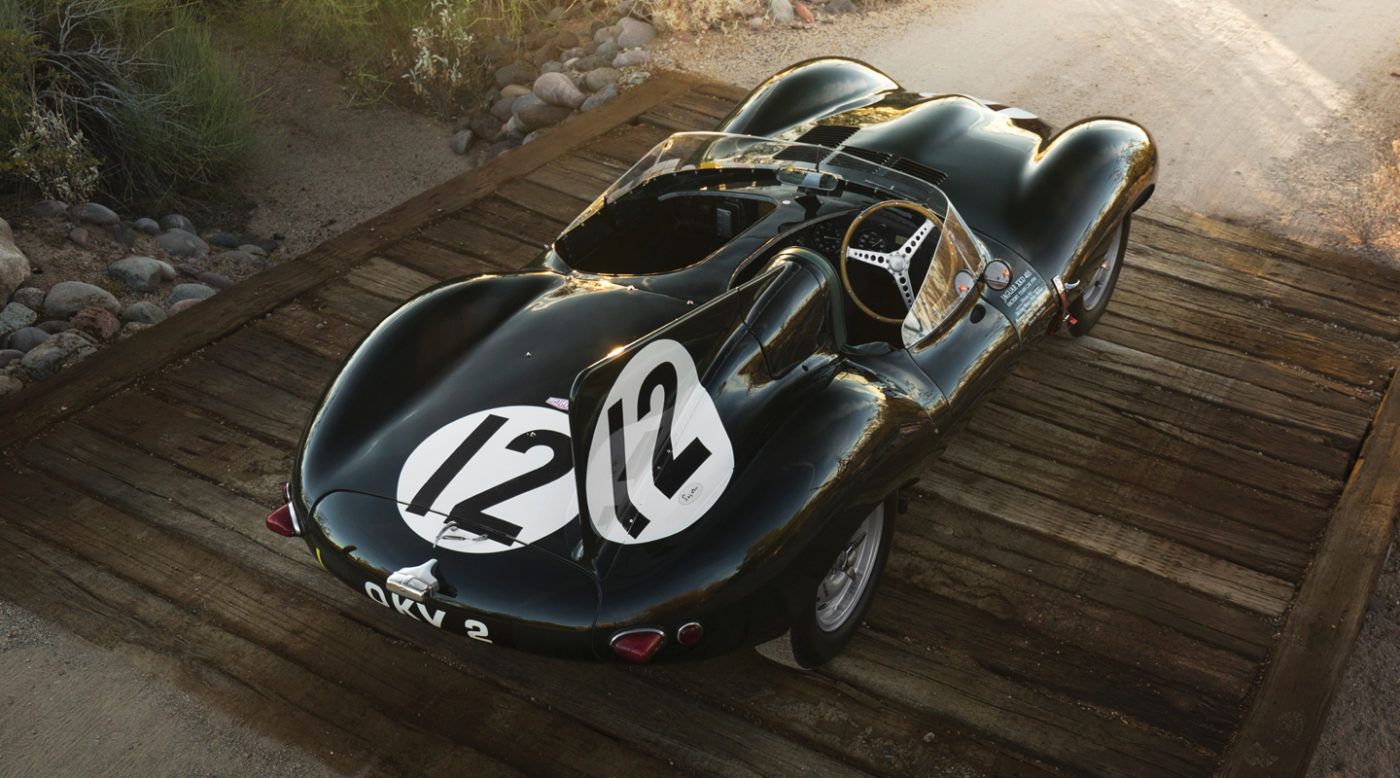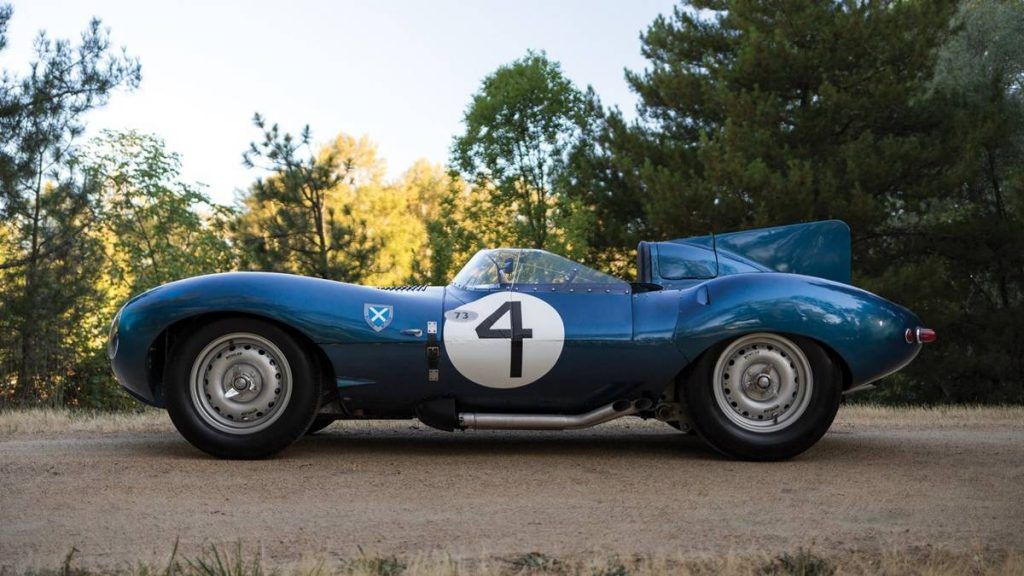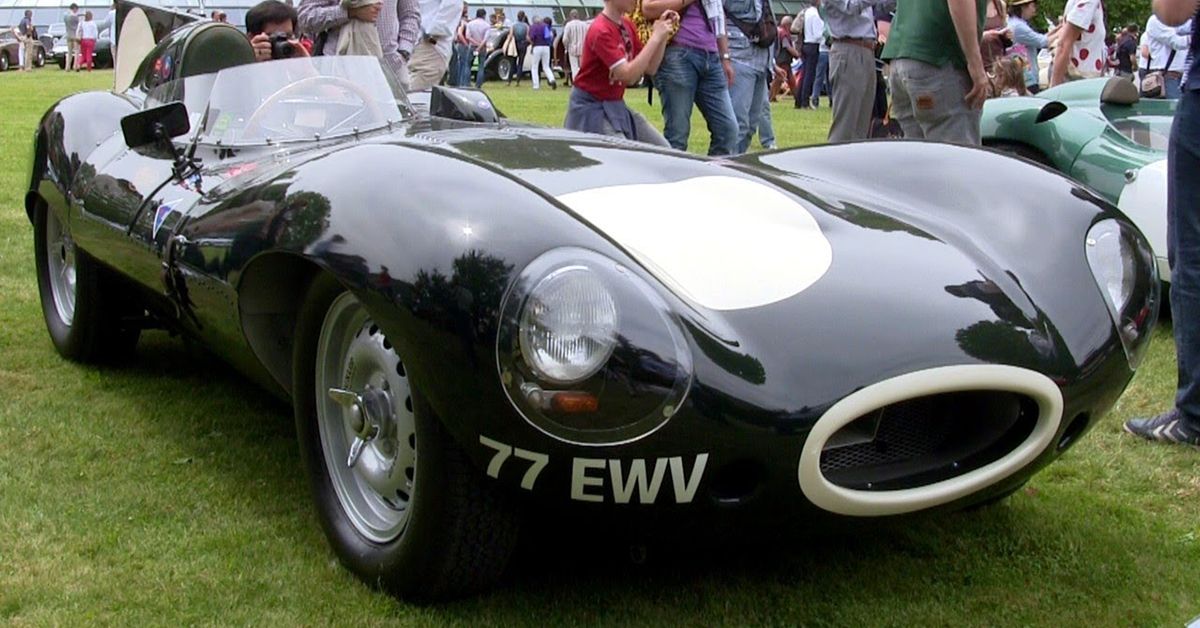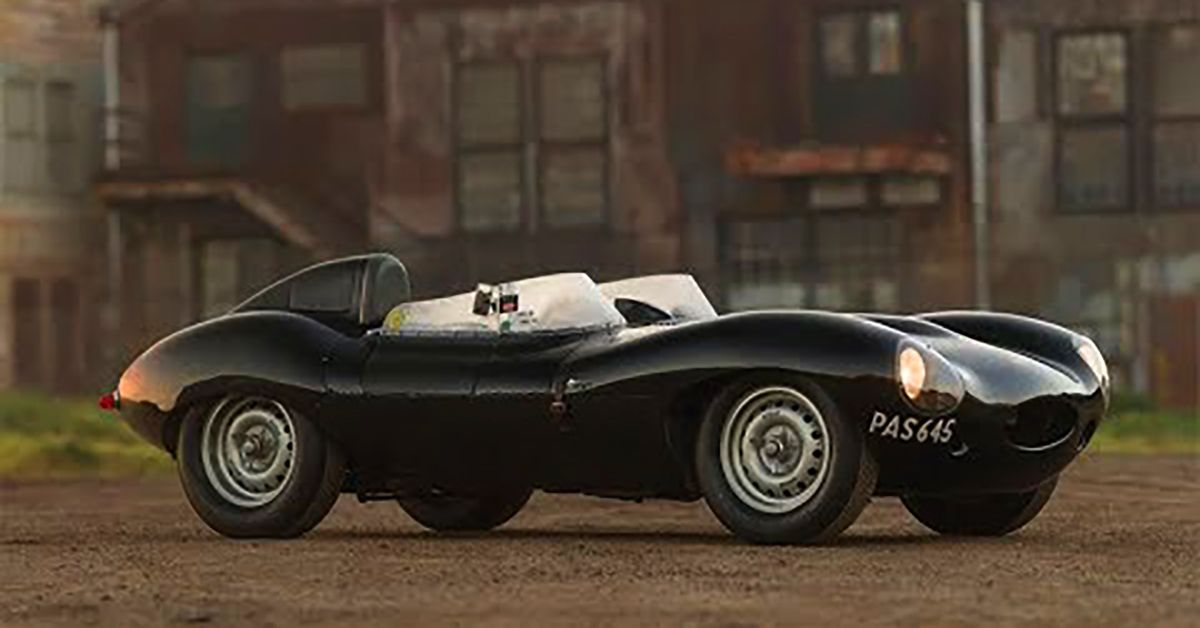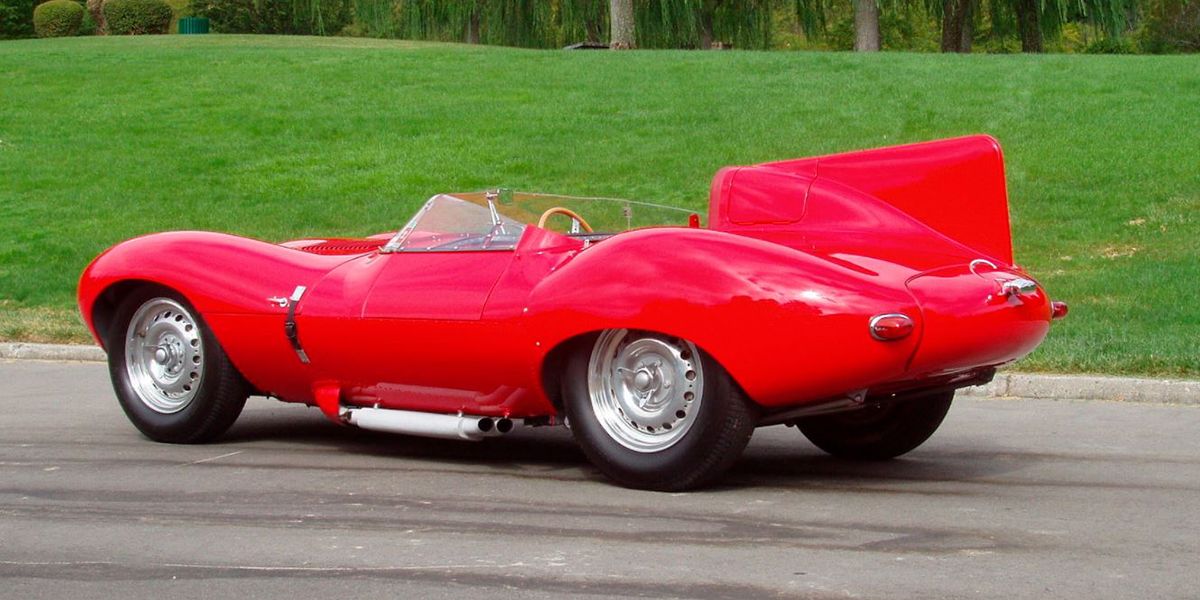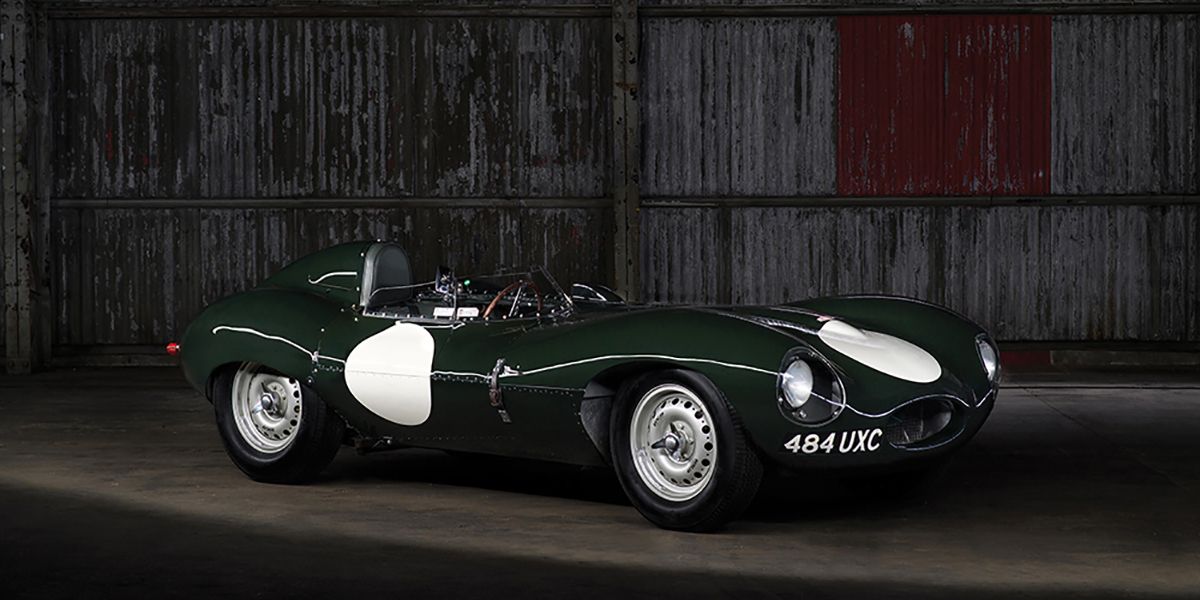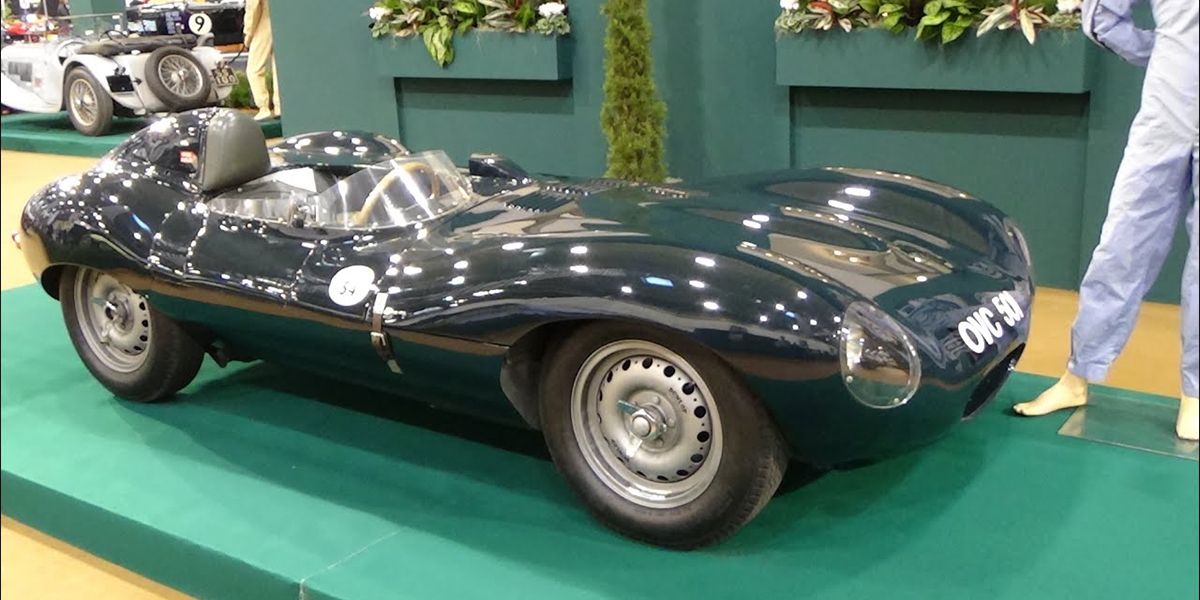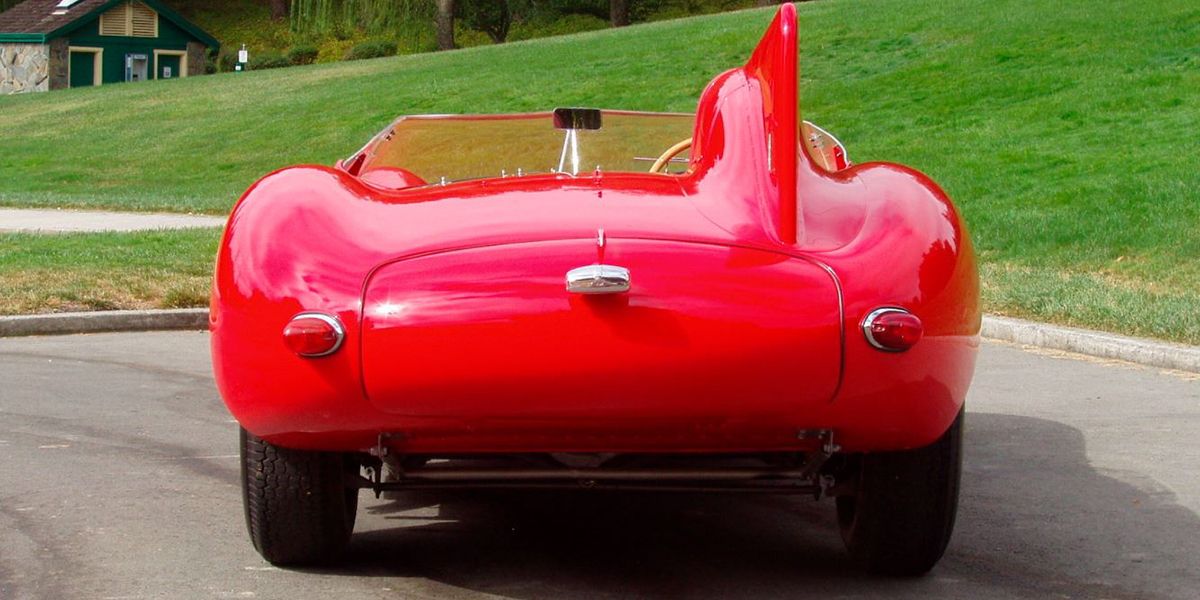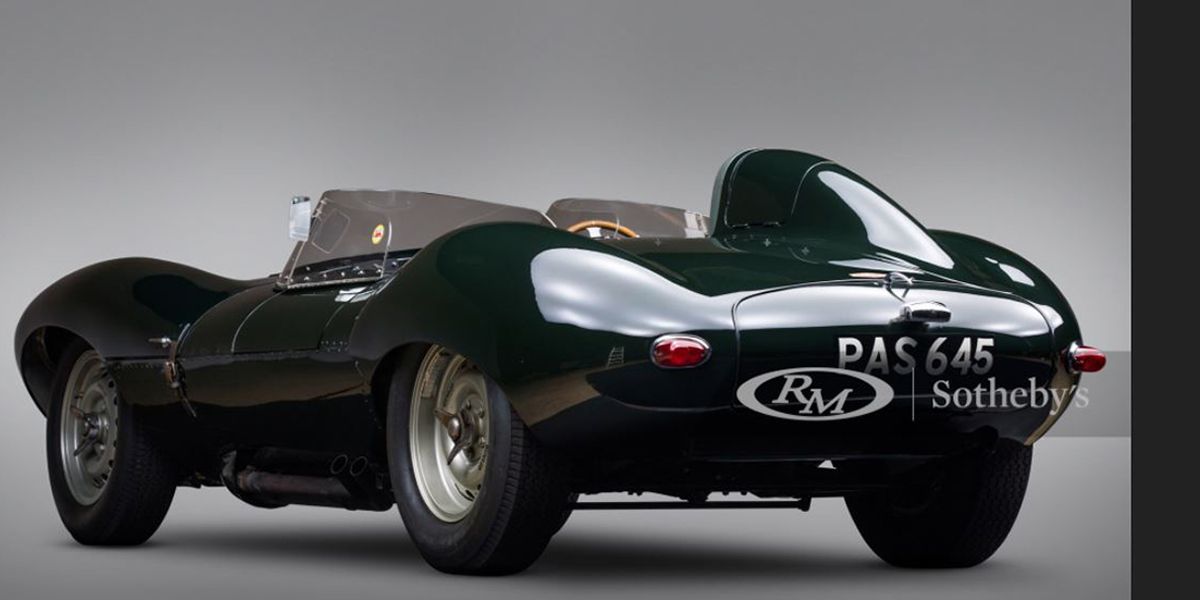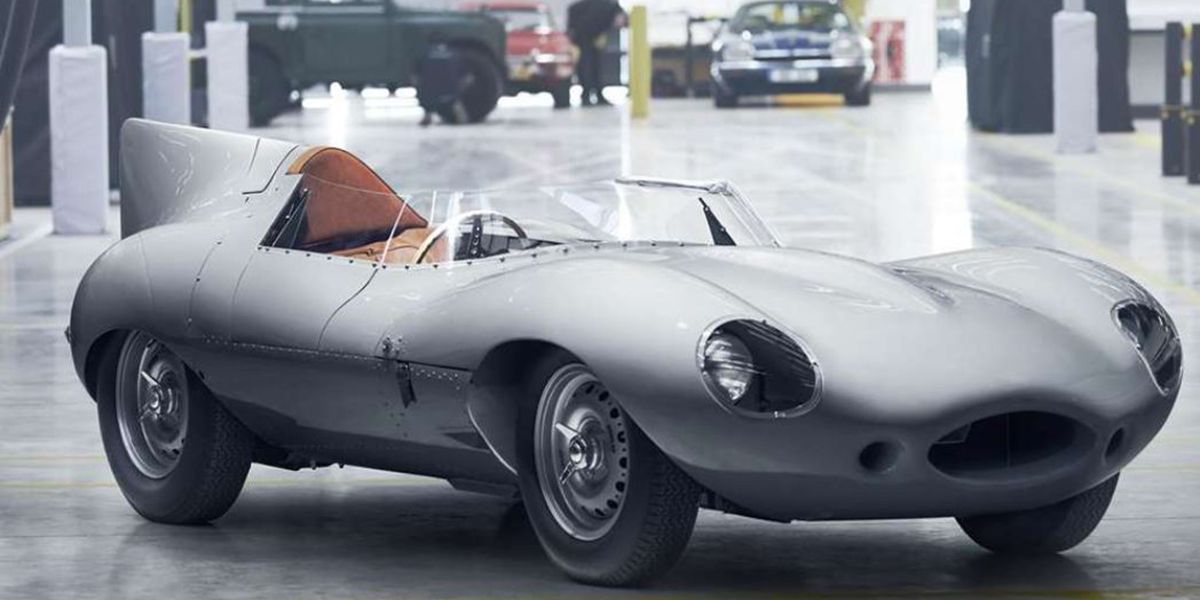Made by the Jaguar Competition Department, and targeted at 24 hours of Le Mans, the Jaguar D-Type was first introduced to the world in 1954. It borrowed a few features like its Dunlop disc brakes from the Le Mans proven Jaguar C-Type, but most of its design and construction was hugely influenced by World War II aircraft. The aeronautic ties that brought the advanced technology used in the D-Type came from Malcolm Sayer — an aerodynamicist at Bristol Aeroplane Company. Malcolm Sayer is the same man who made the sensational Jaguar E-Type that's praised as one of the most desirable cars on the planet.
Only a few Jaguar D-Types were built, and that's why they become more valuable as each day passes. The end of the D-Type dominance came when William Lyons, the company's autocratic managing director, decided to end Jaguar's involvement with motorsports. Still, the Jaguar D-Type had brought an exciting design and clever engineering to the racing world; some of the innovations it pioneered are still in use today in race cars and superfast exotics that go for millions.
10 Original Jaguar D-Types Are Extremely Rare
Jaguar had initially set aside 100 chassis numbers for the D-Type, but only managed to make 75 units; 25 of the chassis numbers were left unused. This was because of a fire at its Browns Lane factory (Coventry), which destroyed the machinery and tools used to make the D-Type and nine cars.
17 of the 75 made were race cars, while the other 54 D-Types were road-going versions (XKSS models) made for customers. Four were later dismantled for parts, while two of the race cars got converted to XKSS models.
9 Won Le Man 3 Times In A Row
The C-Type was the 1st Jaguar to win 24 Hours of Le Mans (1951 & 1953). When the D-Type got to the same endurance race in 1954, expectations were high; however, it only managed 2nd place behind a Ferrari 375 Plus.
In 1955, the Jaguar D-Type returned with a vengeance and won, but it was a hollow victory because of the tragic events in the race. By also clinching wins in 1956 and 1957 in the hands of the Jaguar Works team and privateer teams, the D-Type had a record three wins in succession. 1957 was the best year at Le Mans with 1st, 2nd, 3rd, 4th, and 6th place finishes. The car only became uncompetitive in 1958 because of rules changes and Jaguar moving away from motorsports.
8 Second Most Expensive British Car Sold At An Auction
Classics that won prominent races during their heydays have always been hot property. When Jaguar D-Types cross the auction block, they fetch nothing short of millions. Chassis XKD 501 — the 1955 24 hours of Le Man's winner became the most expensive British car sold at auction in 2016 when it went for a whopping £15.6 million ($20.9m). This was one of the most original Jaguar D-Type in existence, having only had 2 owners.
However, in 2017, the D-Type was relegated to the 2nd most expensive British car sold at auction when a 1956 Aston Martin DBR1/1 went for a record $22.55m.
7 Engineered To Be Extremely Lightweight
An airplane design element used in the Jaguar D-Type was the use of lightweight materials. It was made using aluminum and magnesium and only weighed 1918 lbs.
With a 310 hp/tonne power-to-weight ratio, even with a less powerful engine than Ferraris using 5-liter V12s, it could accelerate faster and achieve a higher top speed (173mph)
6 A Classical Beauty Responsible For Jaguar's Ascent To Global Adoration
Back in the '60s, creating an extremely fast racer and winning prestigious races was a proven formula for boosting sales. That's exactly what the Jaguar D-Type did for Jaguar's civilian sports cars and luxury sedans when it eclipsed even the success of the Jaguar C-Type at Le Mans.
Because the D-Type was also breathtakingly good-looking, it helped increase recognition and admiration for the Jaguar brand worldwide. Its well-proportioned curves lived on and inspired the finless road-legal XKSS versions and the hugely-popular E-type. Nowadays, it's remembered as Britain's most-loved and most successful Le Mans racer.
5 It Was A Revolution In Race Car Design
Like most race cars of the '50s, the preceding C-Type was made using a traditional steel tubular frame. The D-Type's design was almost entirely different; it used a central monocoque structure combined with lightweight aluminum or magnesium front and rear subframes.
The advantages were big; with the body and chassis being one, the car suffered less loss of torsional rigidity and was much lighter. This was a revolution in car design that's still employed in modern exotics and race cars.
4 Had Aerodynamics Features That Were Ahead Of Time
To beat 5-liter V12 powered Ferrari with a 3.4-liter inline-six, Jaguar had to be creative; with the help of Malcolm Sayer, they created a race car with a streamlined structure honed in a wind tunnel like today F1 cars. The hood was bulged and long, made to reduce drag.
Also, the car had its iconic tail fin behind the driver's head, which significantly improved high-speed stability. The alien-looking design which brought a radical leap in the D-Type's performance was not something the world had seen before. As a note, these aero features made the Jaguar D-Type faster than Ferraris on the 3.5-mile Mulsanne straight at Le Mans.
3 Jaguar D-Type Short Nose And Long Nose Versions
Jaguar D-types are easy to differentiate by their shape. Those made in 1955 boasted a more aerodynamic shape, where the front was made smaller with the nose extended for better aerodynamics. These are called "Long Nose" versions and are arguably the better-looking Jaguar D-Types. 11 of the 17 race cars made were "Long Nose" D-Types and used a Weber carburetor-fed 3.4-liter inline-six engine.
Almost all D-types made from 1956 and XKSS versions (54 in total) are all "Short Nose" D-Types; they were powered by a fuel-injected 3.8-liter inline sixes.
2 Had A Deformable Bag As A Fuel Tank
During World War 2, it was industry standard for airplanes to have deformable bags as fuel tanks. Leaked fuel was the number one cause of explosion if a plane crashed or got shot. With a deformable bag, the tank would remain intact even after a crash.
The deformable bag in the Jaguar D-Type was another of the engineering tactics Mr. Sayer brought to motorsports, where drivers were still dying from explosions after crashes.
1 The D-Type Got Continuation Versions
In 2016, Jaguar announced a limited continuation run to complete the D-Type's planned production of 100 units. They used the 25 chassis numbers that had been in reserve since the '60s. To faithfully remake the Jaguar D-Type, the Jaguar Classic crew was given access to the original documents, engineering drawings and used the same methods employed back then. Each was made by hand and required 10,000 hours to replicate the exact Le Mans-winning car.
It explains why each of the new special XKSS cost buyers a reported $1.4 million. Because the cars didn't meet the modern-day safety and emission standards, they were for-competition-use-only.

